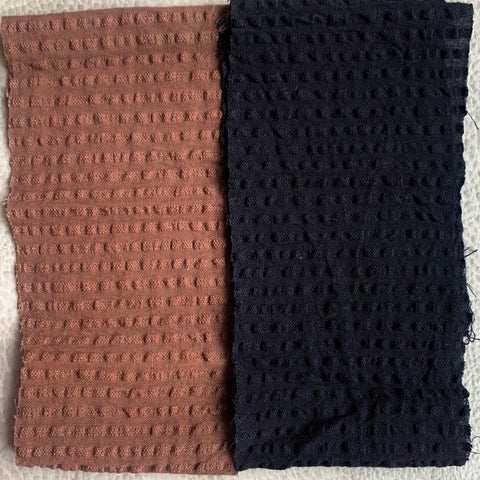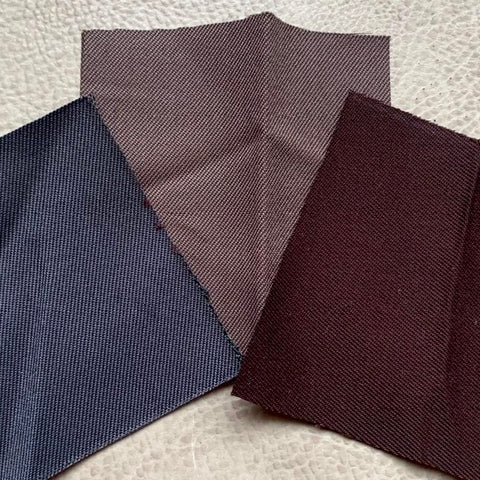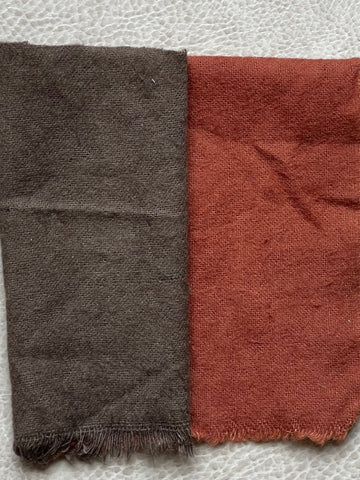Know Your Fabrics

Cotton Seersucker
Seersucker originated in India, where it was called "shirushakar" (meaning "milk and sugar") due to its smooth and crinkled textures. It became a symbol of luxury in the British colonial era and later a summer staple for lightweight, breathable clothing.
Care Guide:
1) Wash in cold water on a gentle cycle.
2) Use mild detergent to maintain its texture.
3) Air dry to prevent shrinkage and maintain the puckered effect.

PC Fabric
The polyester-cotton blend revolutionized fabric manufacturing in the mid-20th century by offering the best of both worlds: the softness of natural cotton and the resilience of synthetic polyester, making it ideal for workwear.
Care Guide:
1) Machine wash in warm water.
2) Avoid high heat when ironing; use a low-to-medium setting.
3) Tumble dry on low or hang to dry for longevity.

Cotton Dobby
First woven in 19th-century England, dobby fabric brought a new dimension to textiles by adding subtle textures without embroidery.
Later, during the Indian independence movement, artisans hand-wove dobby cotton as a quiet rebellion against British mass-produced textiles, keeping craftsmanship alive. Decades later, Hollywood embraced dobby’s textured elegance, using it in period films to add depth and authenticity to historical costumes without heavy embellishment.
Care Guide:
1) Wash in cold water on a gentle cycle.
2) Use mild detergent and avoid bleach.
3) Air dry or tumble dry on low to maintain texture.

100% Cotton (Satin Weave)
It may be 100% cotton, but it shines like silk—without a single drop of chemical finish. The glow comes from its satin weave structure, where threads float over each other in a way that allows light to glide across the surface.
This technique originated in ancient China and traveled through Arab weavers and the Silk Road, gaining fame for its fluid drape and soft sheen. So when you see that glazed shine—it’s not a surface treatment, but the architecture of the weave itself, built to catch light like silk, but with the soul of cotton.
Care Guide:
1) Wash cold or lukewarm with gentle detergent.
2) Iron from the reverse side for a smooth finish.
3) Air dry when possible to preserve the sheen.

Double-Sided 100% Brushed Cotton
Brushed cotton is a plain or twill weave cotton fabric that undergoes an additional mechanical finishing process. After weaving, the fabric is passed through rollers equipped with fine metal bristles, that gently raise the surface fibers. This process adds warmth, softness, and a matte, lived-in feel, without compromising breathability.
Traditionally used in workwear and innerwear across Britain and Japan, it’s now valued for its comfort and natural texture, especially in relaxed or layered silhouettes.
Care Guide:
1) Wash cold with mild detergent.
2) Avoid fabric softeners to protect the nap.
3) Tumble dry low or air dry; iron inside-out if needed.

Bio-Himalayan 100% Pure Wool
Himalayan wool has been hand-spun and woven for centuries by local artisans for making warm shawls and blankets to withstand the harsh winters of the Himalayas. This wool has gained immense popularity worldwide, especially in countries like Japan, Germany, and the USA, where demand for sustainable and ethically sourced fabrics is rising.
This wool is prized for its fine texture and warmth, often fetching 30-50% higher prices than regular wool in international markets.
Care Guide:
1) Hand wash in cold water with a wool-specific detergent.
2) Lay flat to dry to prevent stretching.
3) Store with cedar or lavender to keep moths away.
